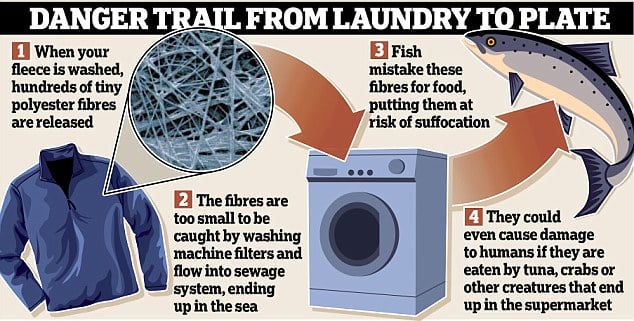Synthetic fabrics, a staple of the outdoor apparel industry, are ending up in oceans in the form of microplastics. Invisible to the the human eye, microplastics are tiny plastic fibers that shed from synthetic materials when cycling through the washing machine.
Because of their size, microplastics are extremely difficult to filter out at wastewater treatment plants. In short, every time synthetic clothes are machine washed, microplastics are released into the water stream–polluting rivers and oceans across the globe. Often mistaken as food by fish, these long plastic fibers will wrap around fish’s internal organs and suffocate them, or will sometimes later make their way into the larger food chain.
In 2011, ecologist Mark Browne released a groundbreaking study on the issue; he found that microfiber pollution had increased by 450% since the 1960s. When he contacted leading outdoor retailers such as Nike, Patagonia, and Polartec, to seek help researching the topic, no one agreed.
Yet as more research comes to light, outdoor retailers are being forced to face the issue. In 2015, Patagonia commissioned University of California Santa Barbara to conduct a research project on the famed Patagonia fleece and its unfortunate capability to shed microplastics.
Research found that a single fleece jacket sheds 250,000 synthetic fibers during a machine wash. Outside Magazine calculates that based on “an estimate of consumers across the world laundering 100,000 Patagonia jackets each year, the amount of fibers being released into public waterways is equivalent to the amount of plastic in up to 11,900 grocery bags.”
The study also found that top loading washing machines loose five times more fibers than front loaders and that old jackets shed more than new ones.
The outdoor industry is beginning to respond to microplastic pollution. Beyond commissioning the fleece research project, Patagonia has been working with Tersus Solutions, an innovative Colorado company, to create a washing machine that washes clothes with carbon dioxide instead of water.
What to do while the outdoor industry catches up? Opt for clothing made of natural fibers and wash synthetics by hand.








